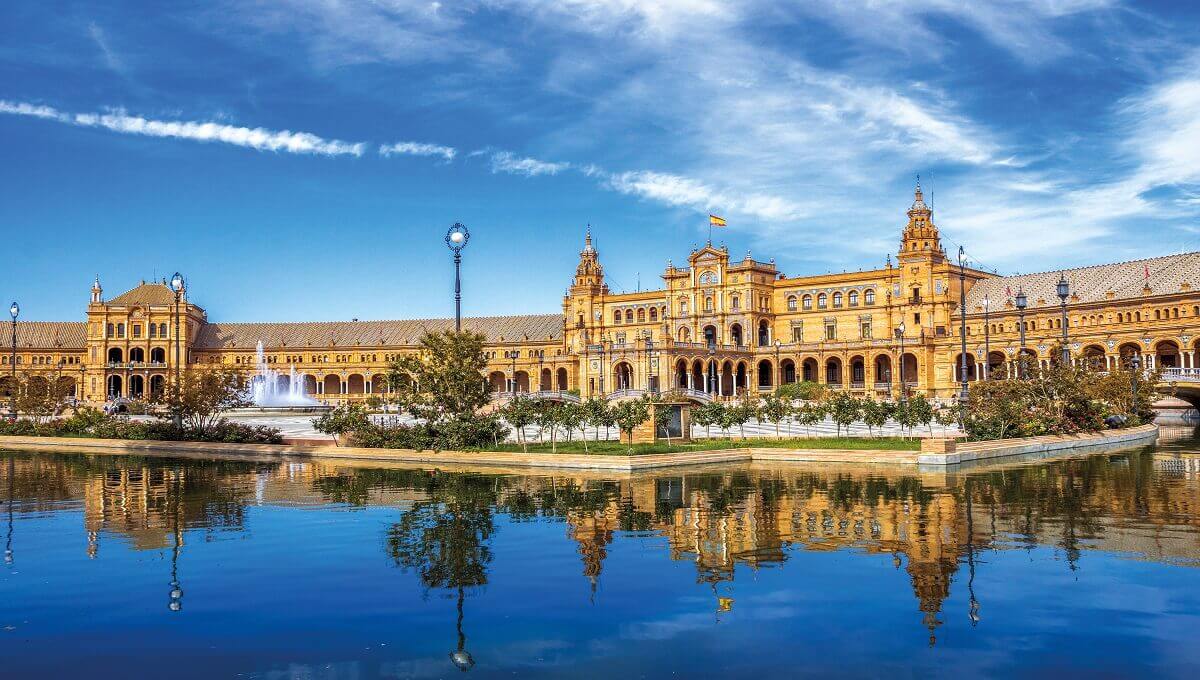
Andalusia, a captivating region in southern Spain, is a land of rich history, stunning landscapes, and vibrant culture. From the majestic Sierra Nevada mountain range to the sun-kissed Mediterranean coast, Andalusia offers a diverse tapestry of experiences for travelers and history enthusiasts alike. With its enchanting blend of Moorish architecture, flamenco music, and delectable cuisine, Andalusia beckons visitors to immerse themselves in its unique charm.
This article will delve into 10 fascinating facts about Andalusia, shedding light on its compelling heritage, natural wonders, and the enduring allure that continues to captivate the hearts of all who venture into this remarkable region. So, buckle up and get ready to embark on a journey through Andalusia's captivating history, breathtaking landscapes, and vibrant traditions.
Key Takeaways:
- Andalusia, in southern Spain, offers a rich blend of history, culture, and natural beauty, from the iconic Alhambra to the passionate rhythms of flamenco, making it a captivating destination for travelers.
- With its diverse landscapes, delicious cuisine, and rich cultural heritage, Andalusia invites visitors to immerse themselves in the essence of Spain’s southern region, offering a captivating journey through time and culture.
Andalusia is the second largest autonomous community in Spain.
Covering an area of over 87,000 square kilometers, Andalusia is surpassed in size only by Castile and León.
The region is home to the Alhambra, a UNESCO World Heritage site.
The Alhambra, a magnificent palace and fortress complex in Granada, is a testament to Andalusia's Moorish heritage and architectural splendor.
Andalusia is renowned for its flamenco music and dance.
Flamenco, with its passionate rhythms and expressive movements, is an integral part of Andalusian culture and identity.
The iconic Andalusian horse breed originated in this region.
Known for its strength, agility, and elegant appearance, the Andalusian horse has been prized for centuries.
Andalusia boasts a diverse range of landscapes, from sun-drenched beaches to snow-capped mountains.
The region's natural beauty encompasses coastal areas, fertile plains, and the majestic Sierra Nevada mountain range.
Seville, the capital of Andalusia, is home to the largest Gothic cathedral in the world.
The Cathedral of Saint Mary of the See, also known as Seville Cathedral, is a marvel of architectural grandeur.
Andalusia's cuisine features an array of delectable dishes, including gazpacho, paella, and churros.
The region's culinary delights reflect a blend of Mediterranean and Moorish influences.
The traditional Andalusian architecture is characterized by charming whitewashed villages and intricate tilework.
The picturesque villages with their narrow streets and vibrant floral displays epitomize the region's enchanting allure.
Andalusia experiences a warm Mediterranean climate with hot, dry summers and mild winters.
The region's climate contributes to its appeal as a year-round destination for visitors.
Andalusia has a rich cultural heritage, with contributions to art, literature, and science.
From the poetry of Federico García Lorca to the discoveries of Muslim scholars, Andalusia's cultural legacy is profound and enduring.
Andalusia, with its captivating blend of history, culture, and natural beauty, offers a captivating journey for travelers seeking to immerse themselves in the essence of Spain's southern region. Whether exploring the ancient wonders of the Alhambra, savoring the flavors of Andalusian cuisine, or experiencing the passionate rhythms of flamenco, this vibrant land invites visitors to discover the enchanting tapestry of its traditions and landscapes. The allure of Andalusia lies in its ability to transport visitors through time and culture, embracing them in a tapestry of experiences that resonate with the spirit of this captivating region.
Conclusion
Andalusia is a region steeped in rich history, vibrant culture, and breathtaking landscapes. From its captivating Moorish architecture to its lively flamenco music and dance, Andalusia offers a tapestry of experiences for travelers. The region's diverse geography, encompassing both stunning coastlines and majestic mountains, provides a playground for outdoor enthusiasts. With its warm climate and delectable cuisine, Andalusia beckons visitors to immerse themselves in its charm. Whether exploring the enchanting Alhambra palace in Granada, wandering through the bustling streets of Seville, or savoring the tranquility of the Sierra Nevada, Andalusia promises a journey filled with unforgettable moments.
FAQs
Q: What are the must-visit attractions in Andalusia?
A: Some of the must-visit attractions in Andalusia include the Alhambra in Granada, the Giralda Tower in Seville, the Mezquita-Cathedral in Cordoba, and the Costa del Sol beaches.
Q: What is the best time to visit Andalusia?
A: The best time to visit Andalusia is during the spring (April to June) and fall (September to October) when the weather is pleasant, and the tourist crowds are relatively smaller.
Was this page helpful?
Our commitment to delivering trustworthy and engaging content is at the heart of what we do. Each fact on our site is contributed by real users like you, bringing a wealth of diverse insights and information. To ensure the highest standards of accuracy and reliability, our dedicated editors meticulously review each submission. This process guarantees that the facts we share are not only fascinating but also credible. Trust in our commitment to quality and authenticity as you explore and learn with us.
